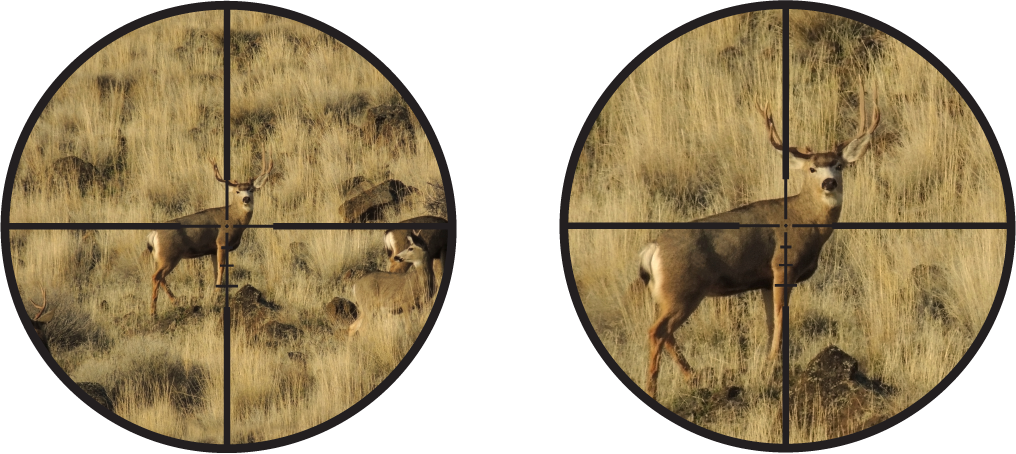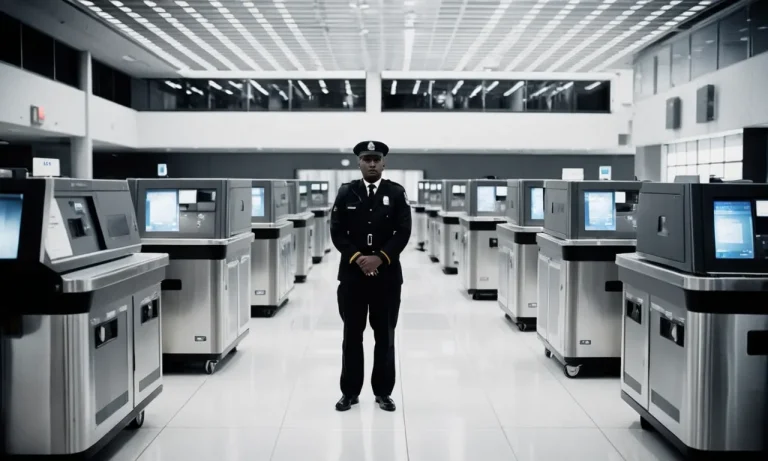If you’re short on time, here’s a quick answer: Both first and second focal plane scopes have advantages for snipers.
In this comprehensive guide, we’ll cover everything you need to know about first-focal plane vs. second-focal plane scopes for sniping applications.
You’ll learn the key differences between FFP and SFP, the pros and cons of each, and why both are used by military snipers, police marksmen, and long-range competition shooters.
What is the First Focal Plane vs. the Second Focal Plane?
When it comes to rifle scopes, the terms “first focal plane” (FFP) and “second focal plane” (SFP) are often mentioned. These terms refer to the position of the reticle within the scope and can greatly affect the shooting experience.
Understanding the difference between FFP and SFP scopes is essential for anyone looking to make an informed decision when purchasing a scope for their rifle.
Definition of Focal Planes in Rifle Scopes
In rifle scopes, the focal plane refers to the position of the reticle in relation to the magnifying lens. When you look through a scope, the reticle is the crosshair or aiming point that helps you aim at your target.
The focal plane determines whether the size of the reticle remains constant or changes as you adjust the magnification of the scope.
First Focal Plane (FFP) Scopes
In a first focal plane scope, the reticle is placed in front of the magnifying lens. This means that as you increase or decrease the magnification, the reticle will appear to grow or shrink in size along with the target.
This feature allows the shooter to use the reticle for accurate holdover and windage corrections at any magnification level.
FFP scopes are often preferred by experienced long-range shooters and snipers because the reticle subtensions remain consistent throughout the entire magnification range.
Second Focal Plane (SFP) Scopes
In contrast, a second focal plane scope has the reticle positioned behind the magnification lens. This means that as you adjust the magnification, the reticle size remains constant while the target appears to change size.
The advantage of SFP scopes is that the reticle is easier to see at higher magnifications, making them popular for hunting and target shooting at shorter distances.
However, the subtensions on the reticle only remain accurate at one specific magnification setting, usually the highest.
FFP vs SFP: Key Differences
The main difference between first focal plane and second focal plane scopes lies in the way the reticle behaves as you adjust the magnification.
FFP scopes offer the advantage of consistent reticle subtensions at any magnification, allowing for precise holdovers and windage corrections.
On the other hand, SFP scopes provide a constant reticle size for improved visibility at higher magnifications, but the reticle subtensions are only accurate at a specific magnification setting.
Ultimately, the choice between FFP and SFP scopes depends on the shooter’s specific needs and preferences.
Experienced long-range shooters who require precise reticle subtensions at all magnification levels may opt for FFP scopes.
Meanwhile, hunters and shooters who prioritize visibility at high magnifications may prefer SFP scopes.
It’s important to consider factors such as shooting style, shooting distances, and personal shooting preferences when selecting the right focal plane for your rifle scope.
Advantages and Disadvantages of FFP vs. SFP Scopes
Pros and Cons of First Focal Plane Scopes
First Focal Plane (FFP) scopes have become increasingly popular among snipers for their unique features and benefits.
This means that the reticle markings remain proportional to the target, allowing for precise holdovers and range estimations regardless of the zoom setting.
Additionally, FFP scopes are known for their ease of use, as shooters don’t need to make any adjustments when switching magnification levels.
On the downside, FFP scopes tend to be more expensive compared to their Second Focal Plane (SFP) counterparts. The complexity of manufacturing FFP scopes and the higher demand for them contribute to their higher price tag.
Another drawback of FFP scopes is that the reticle can appear too small at lower magnifications, making it harder to see and aiming more challenging.
Pros and Cons of Second Focal Plane Scopes
SFP scopes have been a long-standing favorite among snipers due to their simplicity and affordability. The main advantage of SFP scopes is that the reticle remains the same size regardless of the magnification level.
This makes it easier for shooters to quickly acquire targets and maintain a clear sight picture. Additionally, SFP scopes are generally less expensive than FFP scopes, making them a more budget-friendly option for many shooters.
However, SFP scopes have some limitations. One major drawback is that the reticle markings are only accurate at a specific magnification level, typically the highest setting.
This means that holdovers and range estimations may not be accurate when using different zoom settings.
Shooters using SFP scopes need to make adjustments or remember the correct magnification level for accurate reticle measurements. Another disadvantage is that SFP scopes may require more time and effort to adjust the holdover and windage settings as the magnification changes.
FFP vs. SFP: Direct Comparison
To directly compare FFP and SFP scopes, we can look at their key features side by side:
| Feature | First Focal Plane (FFP) | Second Focal Plane (SFP) |
|---|---|---|
| Reticle Accuracy | Accurate at any magnification level | Accurate only at specific magnification level |
| Price | Generally more expensive | Generally less expensive |
| Reticle Size | Can appear small at lower magnifications | Remains the same size |
| Holdover Adjustments | No adjustments needed | May need adjustments at different magnifications |
Ultimately, the choice between FFP and SFP scopes depends on individual preferences and specific shooting needs.
Snipers who require precise reticle measurements at any magnification level may opt for FFP scopes despite their higher cost.
On the other hand, shooters on a budget or those who prioritize ease of use may find SFP scopes to be a more suitable choice.
It’s important to consider the advantages and disadvantages of each type before making a decision, and also consult with experienced snipers or professionals for their recommendations.

Sniper Applications: When to Choose FFP or SFP
Choosing the right scope is crucial for snipers, as it can greatly impact their effectiveness and accuracy in the field.
One of the key decisions snipers have to make is whether to use a first focal plane (FFP) or a second focal plane (SFP) scope.
Each type has its own advantages and is suited for different scenarios. Understanding these differences can help snipers make an informed decision.
FFP Scopes for Long-Range and Unknown Distance Shooting
FFP scopes are particularly useful for snipers engaged in long-range shooting or when the distance to the target is unknown. In an FFP scope, the reticle remains the same size relative to the target, regardless of the magnification level.
This ensures that the holdover points and windage markers on the reticle remain accurate at any magnification setting.
For example, if a sniper is engaging a target at 1000 yards and needs to compensate for bullet drop, the holdover points on an FFP reticle will be accurate at both low and high magnification levels.
This flexibility allows snipers to quickly adapt to changing distances and engage targets with precision, even in challenging conditions.
SFP Scopes for Tactical and Rapid-Fire Scenarios
SFP scopes, on the other hand, are better suited for tactical scenarios and rapid-fire situations where quick target acquisition is essential.
In an SFP scope, the reticle remains the same size regardless of the magnification level.
This means that the holdover points and windage markers on the reticle are only accurate at a specific magnification setting, typically the highest power.
This fixed reticle size allows snipers to quickly acquire targets and engage them with accuracy at the predetermined magnification level.
SFP scopes are also generally less expensive than FFP scopes, making them a popular choice among snipers who prioritize speed and cost-effectiveness in their operations.
Top FFP and SFP Scopes for Snipers
When it comes to choosing the top FFP and SFP scopes for snipers, there are several renowned options available in the market.
These scopes offer exceptional clarity, durability, and precise tracking capabilities.
For SFP scopes, popular choices among snipers include the Leupold Mark 6 3-18×44 and the Trijicon AccuPoint 5-20×50. These scopes are known for their ruggedness, reliability, and superior low-light performance.
Ultimately, the choice between FFP and SFP scopes depends on the specific needs and preferences of the sniper.
Factors such as shooting style, engagement distances, and mission requirements should all be taken into consideration when selecting the appropriate scope.
By understanding the advantages and limitations of both FFP and SFP scopes, snipers can make an informed decision that optimizes their performance in the field.
Conclusion
In conclusion, while second focal plane (SFP) scopes are more prevalent, first focal plane (FFP) scopes offer unique advantages for long-range shooting where accurate ranging and holdover estimation is critical.
Police and military snipers utilize both FFP and SFP scopes depending on expected engagement distances and scenarios. Precision shooters should carefully evaluate their needs and match the focal plane to the intended use case.
With good optics and proper training, snipers can achieve hits on distant targets regardless of whether they choose first or second focal plane scopes.






